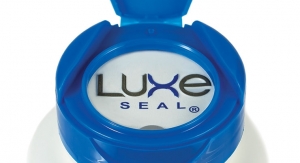Marian Zboraj09.18.07
Kellogg Co., Battle Creek, MI, has made it fast and easy for consumers to make informed cereal selections for themselves and their families by including Guideline Daily Amounts (GDAs) from the Nutrition Facts Panel on the front of Kellogg's brand ready-to-eat cereals in the U.S.
"For more than 100 years, Kellogg has been committed to helping consumers make informed food choices. Guideline Daily Amounts on Kellogg's ready-to-eat cereals will do just that," said Jennifer Garrett, PhD, Kellogg director of nutrition marketing. "Research indicates consumers are seeking fast and simple ways to make nutrition-based decisions, and GDAs displayed on the front of package allow them to do so quickly."
The new GDA feature will appear as a colorful and easy-to-use Nutrition at a Glance banner on the box top or upper, right-hand corner of Kellogg's ready-to-eat cereal boxes. Four key nutrients will be displayed on every box: calories, fat, sodium and total grams of sugar. Additionally, up to two nutrients Americans need more of as identified by the National Health and Nutrition Examination Survey (NHANES), including fiber, calcium, potassium, magnesium, and vitamins A, C and E will be displayed. All GDA information is based on a 2,000 calorie daily diet.
GDAs are not new recommendations or standards for healthy eating—instead, they provide a quick snapshot of how a food fits into a consumer's daily diet and complement the Nutrition Facts Panel. Kellogg first pioneered the use of GDAs in Europe and Australia, where the labeling approach has been well-received and adopted by the industry.
Research shows that time-pressed consumers want to streamline the shopping process. Consumers want quicker ways to make informed nutrition choices for themselves and their families. Consumers can use the GDAs on Kellogg's cereals to evaluate nutrients, compare products and select the Kellogg's brand cereal that is right for them.
"For more than 100 years, Kellogg has been committed to helping consumers make informed food choices. Guideline Daily Amounts on Kellogg's ready-to-eat cereals will do just that," said Jennifer Garrett, PhD, Kellogg director of nutrition marketing. "Research indicates consumers are seeking fast and simple ways to make nutrition-based decisions, and GDAs displayed on the front of package allow them to do so quickly."
The new GDA feature will appear as a colorful and easy-to-use Nutrition at a Glance banner on the box top or upper, right-hand corner of Kellogg's ready-to-eat cereal boxes. Four key nutrients will be displayed on every box: calories, fat, sodium and total grams of sugar. Additionally, up to two nutrients Americans need more of as identified by the National Health and Nutrition Examination Survey (NHANES), including fiber, calcium, potassium, magnesium, and vitamins A, C and E will be displayed. All GDA information is based on a 2,000 calorie daily diet.
GDAs are not new recommendations or standards for healthy eating—instead, they provide a quick snapshot of how a food fits into a consumer's daily diet and complement the Nutrition Facts Panel. Kellogg first pioneered the use of GDAs in Europe and Australia, where the labeling approach has been well-received and adopted by the industry.
Research shows that time-pressed consumers want to streamline the shopping process. Consumers want quicker ways to make informed nutrition choices for themselves and their families. Consumers can use the GDAs on Kellogg's cereals to evaluate nutrients, compare products and select the Kellogg's brand cereal that is right for them.


















